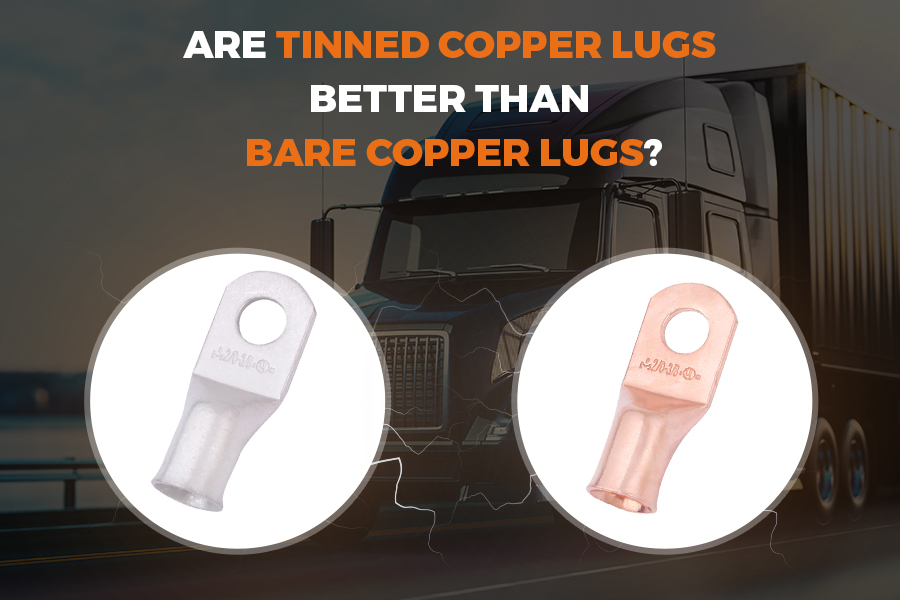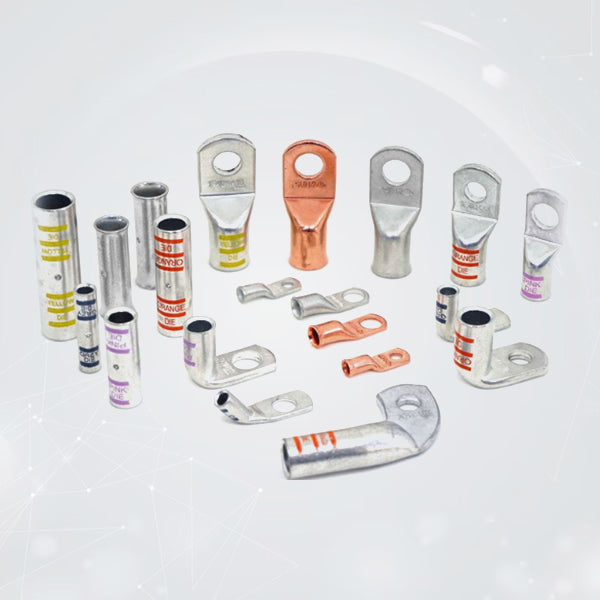
Are tinned copper lugs better than bare copper lugs?
Introduction
When it comes to electrical connections, ensuring safety and durability is paramount. Copper lugs play a crucial role in creating reliable electrical connections, but there's a debate: Are tinned copper lugs better than their non-tinned counterparts? In this blog, we will dive deep into the pros and cons of tinned copper lugs compared to pure copper lugs to help you make an informed decision.
What Are Tinned Copper Lugs?
Before we delve into the tinned vs. non-tinned debate, let's first understand what copper lugs are and why they are essential in electrical applications.
Copper lugs, also known as cable lugs or wire lugs, are metal connectors used to terminate electrical cables and wires. They provide a secure and conductive link between the cable and electrical equipment, such as circuit breakers, switches, or terminal blocks.
Copper is a preferred material for lugs due to its excellent electrical conductivity and corrosion resistance. However, the debate arises when we consider tinned copper lugs.
Tinned Copper Lugs or Marine battery Lugs: What Are They?
Tinned copper lugs also know by many in the trade as marine battery lugs are copper lugs that have been coated with a thin layer of tin. This process, known as tinning, involves applying a protective layer of tin to the surface of the copper lug through an electrolysis process. The tin forms a barrier between the copper and the external environment, providing several advantages.
Pros of Tinned Copper Lugs
- Corrosion Resistance: Tinning creates a protective layer that helps prevent corrosion and oxidation of the copper lug. This is particularly beneficial in environments with high humidity or exposure to moisture.
- Solderability: Tin is easier to solder than pure copper. The tinned surface of the lug allows for better soldering connections, ensuring a secure bond between the lug and the cable.
- Durability: Tinned copper lugs tend to have a longer lifespan due to their resistance to corrosion, making them suitable for outdoor and marine applications.
Cons of Tinned Copper Lugs
- Cost: Tinned copper lugs are generally more expensive than non-tinned copper lugs due to the additional electro-tinplating process.
- Soldering Skill Required: While tinning allows for easier soldering, it also requires some skill to ensure a proper solder joint. Novices may find it more challenging to work with tinned lugs.
- Potential for Tin Whiskers: In rare cases, tinned surfaces can develop tin whiskers, which are tiny, crystalline structures that can cause short circuits. Proper physical separation between ring terminals at the battery terminal connectors where multiple battery cables are being terminated can prevent any negative effect of tin whiskers.
Non-Tinned Copper Lugs or Bare Copper Battery Cable Ends:
Non-tinned copper lugs also known as bare copper battery cable ends, on the other hand, are lugs made solely from copper without any tin layer on them. Bare copper lugs are also well-suited for indoor use or environments with minimal exposure to moisture.
Pros of Bare Copper Lugs
- Cost: They are a cost-effective choice for many applications. The cost of producing bare copper lugs is lower than their tinned copper counterparts as the manufacturing process does not involve a lengthy electro-tinplating process.
- Wider availability: Bare copper lugs are readily available in various sizes and configurations from many suppliers, making it easy to source the right components for your project.
- High Current Capacity: Due to their excellent conductivity and low resistance, bare copper lugs are well-suited for high-current applications, such as in power distribution systems.
Cons of Bare Copper Lugs
- Durability: Bare copper lugs when installed on a battery terminal connector post can oxidise significantly faster than tinned copper lugs. Hence use of bare copper lugs in areas such as the engine compartment should be avoided.
- Not as solderable: Tin provides galvanic properties which help in the soldering process. Due to the lack of tin in bare copper lugs, the solderability of bare copper lugs is not as the same level as a tinned copper lug.
Conclusion
The choice between tinned copper lugs and bare copper lugs depends on your specific application and requirements. Tinned copper lugs offer superior corrosion resistance and solderability, making them a solid choice for outdoor and high-demand applications. However, they come at a higher cost. Bare copper lugs are more budget-friendly and suitable for indoor applications where corrosion is less of a concern. They are still excellent conductors, but their lifespan may be shorter in harsh environments.
Ultimately, the decision should be based on a careful evaluation of your project's needs and budget constraints. Both types of lugs have their merits, and selecting the right one will ensure a safe and reliable electrical connection.





